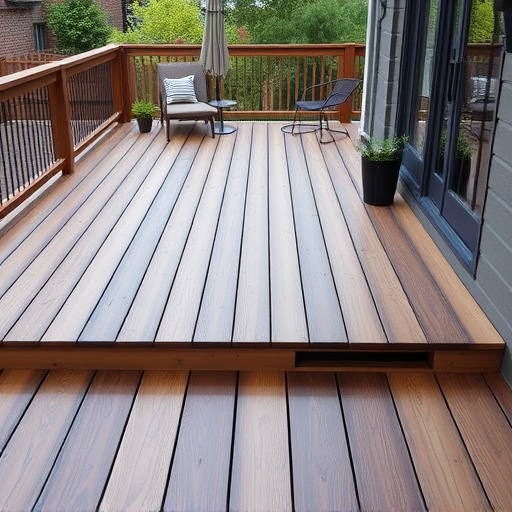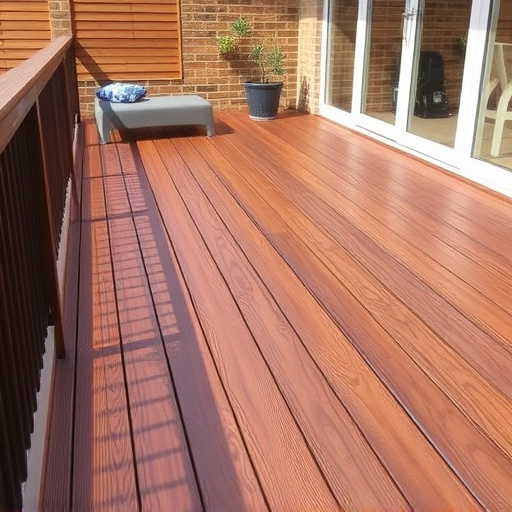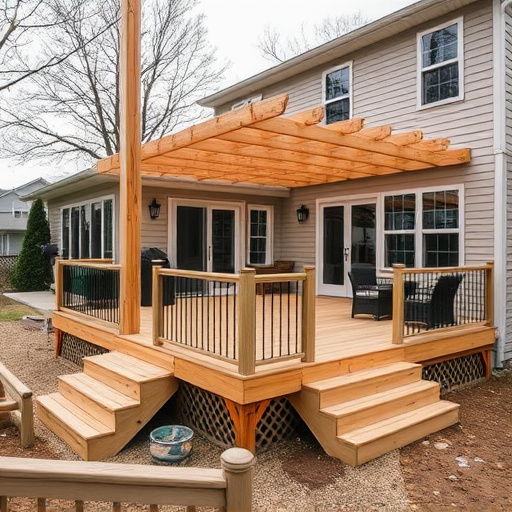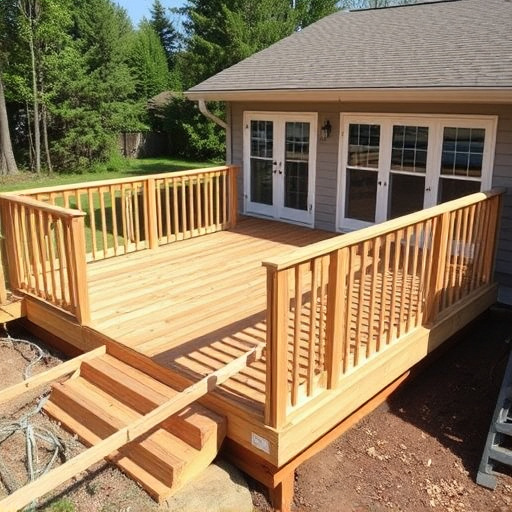Before starting any deck framing project, conduct a comprehensive site assessment and clearing to guarantee stability and remove potential obstructions. This is especially critical for commercial projects aiming for seamless integration with roofing and siding. A level surface enhances safety, simplifies construction, and ensures a robust final structure by addressing ground instability issues, such as rocks, tree roots, or poor drainage, that may compromise the deck's structural integrity over time. Additionally, clear away vegetation and inspect for storm damage to create a safe work area and maintain structural integrity throughout construction.
Before starting any deck framing, leveling the ground is a crucial step that ensures your structure’s longevity and stability. This comprehensive guide will walk you through the essential processes of preparing your outdoor space. From assessing and clearing the site to compaction and grading, we’ll cover everything from identifying potential issues with the ground to setting layout lines for accurate measurements. By following these steps, you’ll create a solid foundation for your deck framing project, guaranteeing structural integrity and a sturdy build.
- Assess and Clear the Site
- – Identifying potential issues with the ground
- – Clearing vegetation and removing debris
Assess and Clear the Site

Before beginning any deck framing project, it’s crucial to start by assessing and clearing the site. This initial step is fundamental for ensuring a solid foundation for your future structure. Begin by evaluating the existing ground conditions; check for any uneven areas, slopes, or inclines that might affect the stability of your deck. Identify potential issues like large rocks, tree roots, or other obstructions that could interfere with leveling the ground.
Once identified, clear the site thoroughly. Remove any debris, vegetation, and structures that aren’t part of your plan. For commercial roofing and siding installation projects, this step becomes even more critical, as it ensures a seamless integration of the deck framing with other structural elements like roofing and siding. A level surface not only facilitates efficient deck construction but also enhances safety for both workers and future users of the space.
– Identifying potential issues with the ground

Before beginning any deck framing project, it’s crucial to assess the ground beneath you. Uneven terrain can lead to structural issues down the line, causing your deck to lean, rot, or collapse over time. Look out for significant changes in elevation, which might indicate buried rocks or tree roots that could disrupt the deck’s foundation. Additionally, check for any signs of erosion, as this could signal poor drainage, a problem that professional siding and roofing services can help address.
Inspect the current state of your home exterior to identify potential problems like cracked or heaved foundations, which may be indicative of underlying ground instability. These issues must be addressed before framing to ensure the deck’s longevity. By taking the time to thoroughly evaluate these factors, you lay a solid foundation for successful and safe deck framing.
– Clearing vegetation and removing debris

Before beginning any deck framing project, it’s essential to prepare the ground properly. The first step is clearing away any vegetation and removing debris from the site. This includes trees, shrubs, weeds, and even fallen branches or logs. Not only does this ensure a clear work area for the framing process, but it also prevents potential damage to your new deck caused by roots or sharp objects during construction.
Additionally, inspecting and addressing any existing storm damage repair or siding repairs is crucial. Debris from storms like hail or strong winds can create hazardous conditions, and damaged siding or roofing around the area could compromise the structural integrity of your deck. Clearing these issues ensures a safer working environment and a more secure final product.
Before beginning any deck framing project, ensuring your site is level and clear is paramount. By assessing and clearing the area of potential issues and debris, you create a solid foundation for your deck’s structural integrity. This initial step not only enhances the stability of your future deck but also sets the stage for a successful construction process.














